Related Research Articles

Klaus Emil Julius Fuchs was a German theoretical physicist and atomic spy who supplied information from the American, British and Canadian Manhattan Project to the Soviet Union during and shortly after World War II. While at the Los Alamos Laboratory, Fuchs was responsible for many significant theoretical calculations relating to the first nuclear weapons and, later, early models of the hydrogen bomb. After his conviction in 1950, he served nine years in prison in the United Kingdom, then migrated to East Germany where he resumed his career as a physicist and scientific leader.
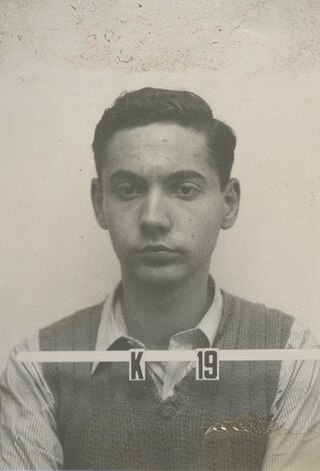
Theodore Alvin Hall was an American physicist and an atomic spy for the Soviet Union, who, during his work on United States efforts to develop the first and second atomic bombs during World War II, gave a detailed description of the "Fat Man" plutonium bomb, and of several processes for purifying plutonium, to Soviet intelligence. His brother, Edward N. Hall, was a rocket scientist who led the U.S. Air Force's program to develop an intercontinental ballistic missile, personally designing the Minuteman missile and convincing the Pentagon and President Eisenhower to adopt it as a key part of the nation's strategic nuclear triad.
Earl Edwin Pitts is a former FBI special agent who was convicted of espionage for selling information to Soviet and Russian intelligence services.

The Espionage Act of 1917 is a United States federal law enacted on June 15, 1917, shortly after the United States entered World War I. It has been amended numerous times over the years. It was originally found in Title 50 of the U.S. Code but is now found under Title 18. Specifically, it is 18 U.S.C. ch. 37
Wen Ho Lee or Li Wenho is a Taiwanese-American nuclear scientist and a mechanical engineer who worked for the University of California at the Los Alamos National Laboratory in New Mexico. He created computerized simulations of nuclear explosions for the purposes of scientific inquiry, as well as for improving the safety and reliability of the U.S. nuclear arsenal.
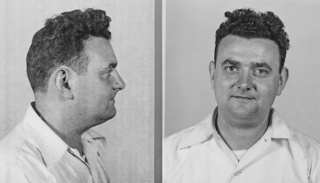
David Greenglass was an American machinist and atomic spy for the Soviet Union who worked on the Manhattan Project. He was briefly stationed at the Clinton Engineer Works uranium enrichment facility at Oak Ridge, Tennessee, and then worked at the Los Alamos Laboratory in New Mexico from August 1944 until February 1946.

Perseus was the code name of a hypothetical Soviet atomic spy that, if real, would have allegedly breached United States national security by infiltrating Los Alamos National Laboratory during the development of the Manhattan Project, and consequently, would have been instrumental for the Soviets in the development of nuclear weapons.
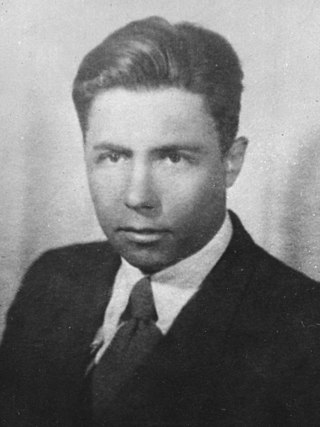
Anatoly Antonovich Yatskov, also known as Anatoli Yatzkov – was a Soviet consul in New York as well as an NKVD foreign intelligence officer handling American agents and couriers linked to the U.S. Manhattan Project during WWII. His spy cover was eventually blown by the U.S. Army Venona Program which identified him as a key NKVD spymaster involved in the 1940s Atomic Spy Ring.
The Lawrence Franklin espionage scandal involved Lawrence Franklin passing classified documents regarding United States policy towards Iran to Israel. Franklin, a former United States Department of Defense employee, pleaded guilty to several espionage-related charges and was sentenced in January 2006 to nearly 13 years of prison, which was later reduced to ten months' house arrest. Franklin passed information to American Israel Public Affairs Committee policy director Steven Rosen and AIPAC senior Iran analyst Keith Weissman, who were fired by AIPAC. They were then indicted for illegally conspiring to gather and disclose classified national security information to Israel. However, prosecutors later dropped all charges against them without any plea bargain.

Atomic spies or atom spies were people in the United States, the United Kingdom, and Canada who are known to have illicitly given information about nuclear weapons production or design to the Soviet Union during World War II and the early Cold War. Exactly what was given, and whether everyone on the list gave it, are still matters of some scholarly dispute. In some cases, some of the arrested suspects or government witnesses had given strong testimonies or confessions which they recanted later or said were fabricated. Their work constitutes the most publicly well-known and well-documented case of nuclear espionage in the history of nuclear weapons. At the same time, numerous nuclear scientists wanted to share the information with the world scientific community, but this proposal was firmly quashed by the United States government. It is worth noting that many scientists who worked on the Manhattan Project were deeply conflicted about the ethical implications of their work, and some were actively opposed to the use of nuclear weapons.

Nuclear espionage is the purposeful giving of state secrets regarding nuclear weapons to other states without authorization (espionage). There have been many cases of known nuclear espionage throughout the history of nuclear weapons and many cases of suspected or alleged espionage. Because nuclear weapons are generally considered one of the most important of state secrets, all nations with nuclear weapons have strict restrictions against the giving of information relating to nuclear weapon design, stockpiles, delivery systems, and deployment. States are also limited in their ability to make public the information regarding nuclear weapons by non-proliferation agreements.
Richard W. Miller was an American FBI agent who was the first FBI agent indicted for and convicted of espionage. In 1991, he was sentenced to 20 years in prison but was freed after serving fewer than three years.
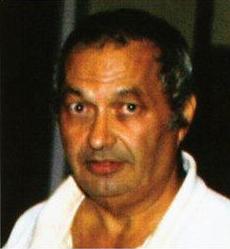
Noshir Sheriarji Gowadia is a former design engineer and convicted spy for several countries. He was arrested in 2005 and later convicted on industrial espionage-related federal charges.

The Federal Correctional Complex, Butner is a United States federal prison complex for men near Butner, North Carolina. It is operated by the Federal Bureau of Prisons, a division of the United States Department of Justice. FCC Butner is about 25 miles (40 km) northwest of Raleigh, the state capital. It includes the Bureau's largest medical complex, which operates a drug treatment program and specializes in oncology and behavioral science. Among its inmates was Bernie Madoff, who was convicted for perpetrating the largest Ponzi scheme in history. He died at the prison in April 2021.
This page is a timeline of published security lapses in the United States government. These lapses are frequently referenced in congressional and non-governmental oversight. This article does not attempt to capture security vulnerabilities.
Thomas Patrick Cavanagh is an aerospace engineer who was sentenced in 1985 after being convicted of trying to sell stealth bomber secrets to the Soviet Union.
David Sheldon Boone is a former U.S. Army signals analyst who worked for the National Security Agency (NSA) and was convicted of espionage-related charges in 1999 related to his sale of secret documents to the Soviet Union from 1988 to 1991. Boone's case was an example of a late Cold War U.S. government security breach.
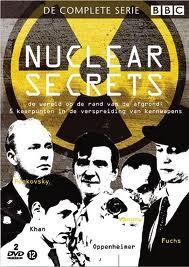
Nuclear Secrets, aka Spies, Lies and the Superbomb, is a 2007 BBC Television docudrama series which looks at the race for nuclear supremacy from the Manhattan Project through to Pakistan's nuclear weapons programme.
Mohamad Anas Haitham Soueid is a Syrian-born naturalized United States citizen and a resident of Leesburg, Virginia who was indicted on espionage-related charges by federal prosecutors in October 2011. Soueid, 47 years old, is accused of passing information about Syrian American protesters in the United States to the government of Syrian President Bashar al-Assad, who are thought to have arrested and tortured numerous Syrian political refugees' family members and associates living in Syria.
References
- 1 2 William J. Broad (September 27, 2010). "Zeal for Dream Drove Scientist in Secrets Case". New York Times . Retrieved 2010-09-28.
- 1 2 3 4 "Feds: Scientist tried to sell nuclear data". Miami Herald. Retrieved September 18, 2010.[ dead link ]
- 1 2 3 4 Spohn, Lawrence (February 25, 2000). "Physicist Recalls Own Charges of Spying". Daily News .
- ↑ Spohn, Lawrence (March 4, 2000). "Rebel physicist is on the outside, looking in". The San Diego Union - Tribune (SOUTH ZONE Edition).
- ↑ "Fellow physicists say Mascheroni no spy". Associated Press. 26 October 2009.[ permanent dead link ]
- ↑ "Leonardo Mascheroni Indictment" (PDF). Department of Justice.
- 1 2 William J. Broad (September 17, 2010). "Couple Accused of Passing Nuclear Arms Secrets". New York Times . Retrieved September 18, 2010.
- ↑ "FBI — Former Workers at Los Alamos National Laboratory Plead Guilty to Atomic Energy Act Violations". FBI.
- ↑ "BOP: Federal Inmates By Name". Federal Bureau of Prisons . Retrieved May 19, 2021. Search for Pedro Mascheroni.